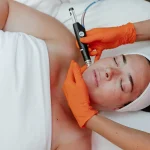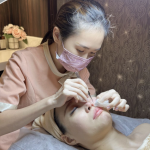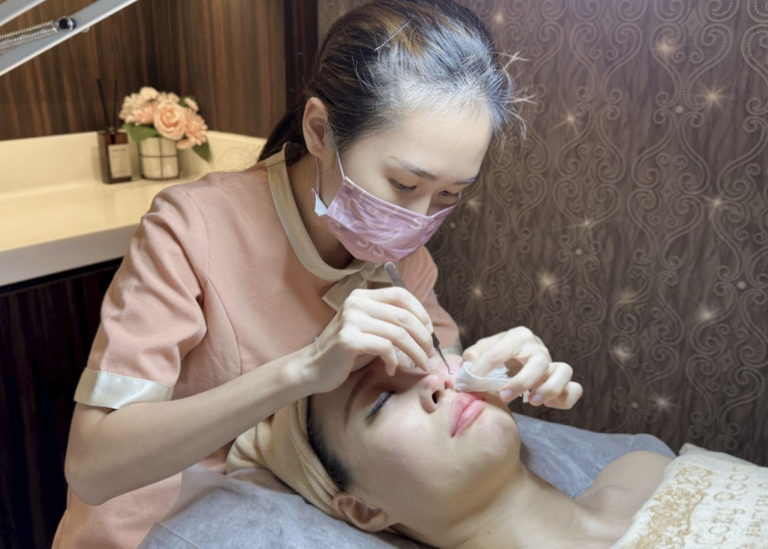Dry eye syndrome, formally known as keratoconjunctivitis sicca, is a medical condition characterized by chronically dry, scratchy eyes. This can range from very mild, to severe enough to blur your vision and cause corneal scarring.
But what actually causes dry eyes? It usually stems from one of two things: decreased levels of tear production, or increased tear evaporation. These problems, in turn, can occur for a variety of reasons. Autoimmune disorders, prescription medication side effects, various chronic health conditions, and simple aging. In some cases, it may be idiopathic, meaning it occurs without any easily identifiable underlying cause.
Insufficient Tears vs Excessive Tear Evaporation
Dry eye syndrome can be roughly divided into two subtypes: aqueous tear deficient dry eye, and evaporative dry eye. Aqueous tear deficient dry eye (ATDD) occurs because the various glands involved in tear secretion aren’t producing enough fluid. This can be further divided up based on whether or not the underlying cause is actually Sjögren’s syndrome.

Sjögren’s syndrome is a complex autoimmune disorder in which the body’s moisture producing glands don’t work correctly. People with this condition experience multiple kinds of bodily dryness — dry eyes, dry mouth, dry skin, and even chronic bronchitis. It’s caused by a complex interplay of genetic, environmental, and pathogenic factors. People with the right underlying genetic predisposition can develop the disorder, often later in life, after an illness or in conjunction with hormonal changes. Sjögren’s syndrome can be confirmed with blood tests for certain antibodies associated with autoimmune disorders, along with filter strip testing to confirm insufficient tear production.
If it isn’t Sjögren’s syndrome, it could simply be age-related dry eye. As people get older, the lacrimal glands produce a lower quantity of tears. Non-Sjögren dry eye could also be caused by cicatrizing conjunctivitis that obstructs the tear glands, or by sensory and motor issues. In most cases, however, it’s related to some kind of medication. There are quite a few medications that have dry eyes as a potential side effect. This is common with anticholinergic antihistamines like Benadryl, but it’s also seen with antihypertensive drugs, decongestants, tricyclic antidepressants, Accutane, and heartburn medications.
Dry eyes can also result from excessive evaporation from the eyes, even though the lacrimal glands are producing tears normally. Evaporative dry eye (EDE) can be intrinsic or extrinsic. Intrinsic EDE can result from lipid deficiency in the Meibomian glands of the eye, which produce an oily component that forms the top of the tear layer. It can also be caused by certain medications, or by problems with blink rate or with the eyelids. Extrinsic EDE is caused by something originating outside the body. It’s seen in cases of Vitamin A deficiency, in allergic eye diseases, and occasionally in people who wear contacts regularly.
Dry Eye Risk Factors
There are a number of risk factors that can raise your risk of experiencing dry eye syndrome. Some of these risk factors are within your control, while others are harder to prevent.
- Dry eyes get more common as you get older, and dry eye syndrome is most prevalent in people over 50. Many aspects of your physiology change as you get older, and tear production is no exception. The volume of tears your glands secrete diminishes with age, and the tear film becomes less stable.
- Women are generally at a higher risk of dry eye syndrome than men, especially with advanced age. Estrogen levels can affect tear production, and women often experience dry eyes during pregnancy or menopause.
- Vitamin A deficiency. A diet low in vitamin A can make you more prone to dry eyes — in fact, many eyedrop formulations that help treat dry eyes contain vitamin A. Good sources of dietary vitamin A include liver, whole milk, cheese, carrots, sweet potatoes, and dark green leafy vegetables.
- Contact lenses. Wearing contact lenses can sometimes make your eyes feel dry. Fortunately, lens manufacturers have recently begun to produce contacts that are specially designed to minimize eye dryness. This is usually achieved by incorporating hydrophilic molecules that also occur naturally in the human eye.
Dry Eye Syndrome is Treatable
There’s no real “cure” for dry eye syndrome, nor is there a cure for Sjögren’s syndrome. However, dry eyes are fairly manageable. If the problem results from a medication side effect, it’s sometimes possible to replace that prescription with a different drug. People with dry eyes may also want to avoid dry, drafty environments, and use tranquileyes goggles or humidifiers to keep air, moist during the winter. Supplemental lubrication in the form of artificial tears is usually the most important part of dry eye treatment, however.
Dry eye syndrome can stem from any of a number of underlying causes, including autoimmune diseases, age, and medication side effects. It can also be idiopathic, meaning it has no known underlying cause. Anything that either causes your tear film to evaporate too quickly, or reduces the number of tears your body produces, will make your eyes feel dry and uncomfortable. Fortunately, treatments like artificial tears can help resolve the problem in most cases.

















